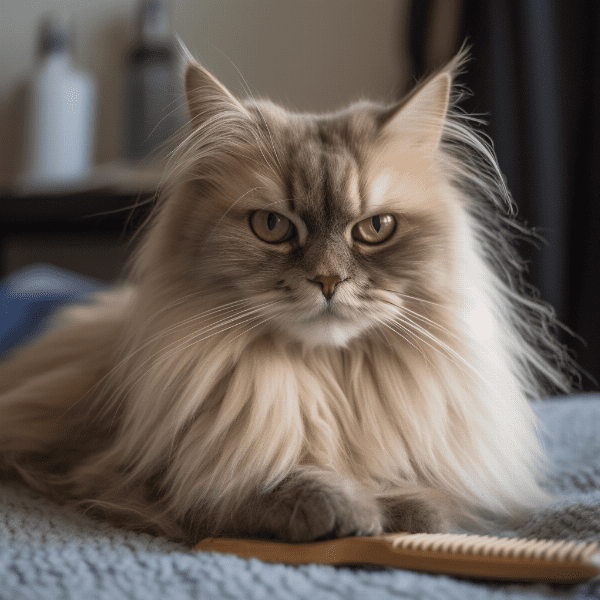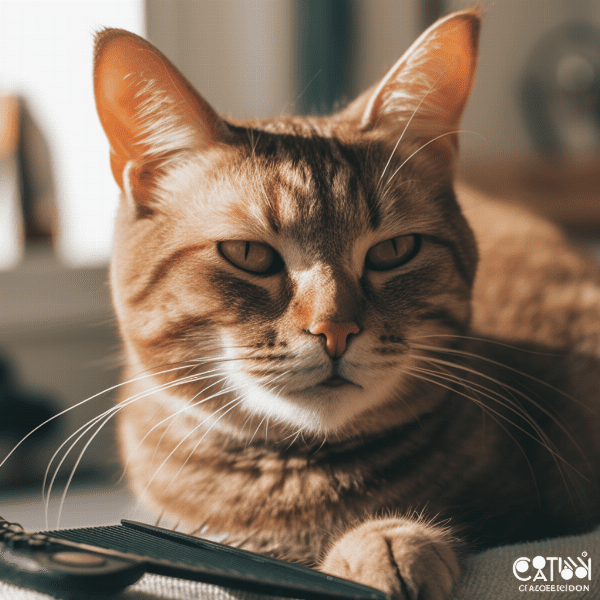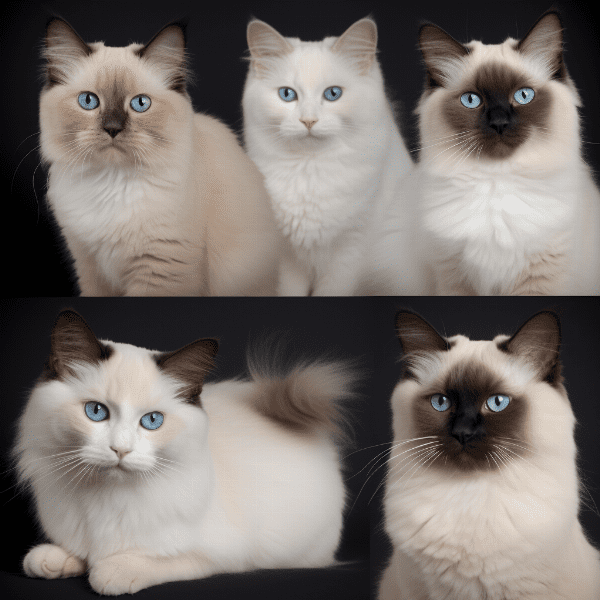Table of Contents
- What are Shaved Long Hair Cats?
- Reasons Why Shaving a Long Hair Cat May Be Necessary
- How to Properly Care for a Shaved Long Hair Cat
- Common Misconceptions About Shaved Long Hair Cats
- Breeds of Cats That Have Long Hair That Can Be Shaved
- The History of Shaving Long Hair Cats
- Potential Health Risks Associated with Shaving a Long Hair Cat
- Tips for Preparing Your Cat for a Shave
- Conclusion: Is Shaving a Long Hair Cat Right for You and Your Feline Friend?
What are Shaved Long Hair Cats?
Shaved long hair cats are felines that have been groomed to have their long, luscious fur trimmed down to a shorter length. While some cat breeds naturally have short hair, many breeds, such as the Persian or Maine Coon, are known for their long, flowing locks. However, these long-haired cats can require quite a bit of maintenance, which is why some owners choose to have them shaved.
The Process of Shaving a Long Hair Cat
The process of shaving a long hair cat involves using clippers to trim the cat’s fur down to a shorter length. This can be done by a professional groomer or by the cat’s owner, but it’s important to be careful not to accidentally injure the cat during the process.
Why Some Owners Choose to Shave Their Long Hair Cats
There are several reasons why cat owners may choose to have their long hair cats shaved. One common reason is to reduce shedding. Long-haired cats can shed a lot, and their fur can get matted and tangled if not properly cared for. Shaving them can make it easier to keep their fur tangle-free and can reduce the amount of hair they shed.
Benefits of Shaving a Long Hair Cat
In addition to reducing shedding, there are other benefits to shaving a long hair cat. Shaving can help keep the cat cool in hot weather, and it can make it easier to spot any skin issues or parasites that may be hiding under their fur. Additionally, some cats may simply be more comfortable with shorter fur, especially if their long hair was causing them discomfort or irritation.
Conclusion
While not all cat owners choose to have their long hair cats shaved, it can be a beneficial option for those who are looking to reduce shedding, keep their cats cool, or make grooming easier. However, it’s important to keep in mind that not all cats will enjoy being shaved, and it’s important to be gentle and careful during the grooming process.
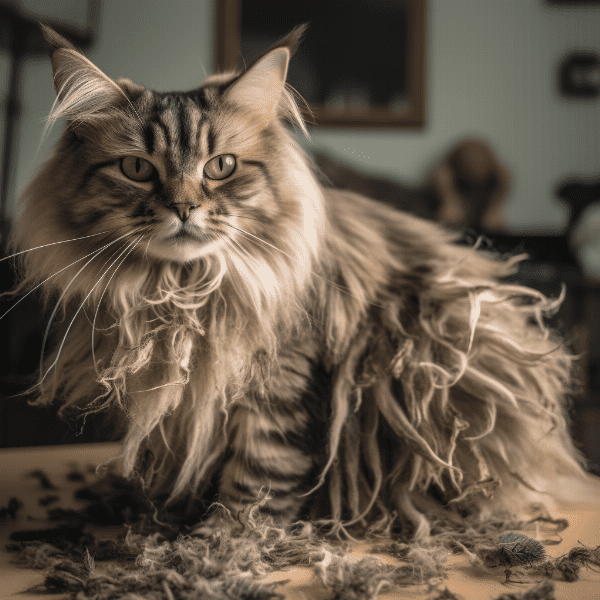
Reasons Why Shaving a Long Hair Cat May Be Necessary
While shaving a long hair cat is not always necessary, there are some situations where it may be beneficial or even necessary for the health and well-being of the cat.
Preventing Matted Fur
One common reason why owners may choose to shave their long hair cats is to prevent their fur from becoming matted or tangled. Cats with long hair are more prone to developing mats, which can be uncomfortable or even painful for the cat. If left untreated, mats can also lead to skin infections or other health issues.
Addressing Skin Issues
Shaving a long hair cat can also make it easier to identify and address any skin issues the cat may be experiencing. Without long hair in the way, owners and veterinarians can more easily see any rashes, sores, or other skin problems that may be affecting the cat. Shaving can also make it easier to apply medication or other treatments to the affected area.
Cooling Down in Hot Weather
Long hair cats may have trouble regulating their body temperature in hot weather, especially if they spend a lot of time outdoors. Shaving their fur can help keep them cool and prevent them from overheating.
Allergy Management
Some people may be allergic to cat hair or dander. Shaving a long hair cat can help reduce the amount of hair and dander in the environment, which may make it easier for people with allergies to coexist with their feline friends.
Conclusion
While not all long hair cats need to be shaved, there are several situations where shaving can be beneficial or necessary. Whether it’s to prevent matting, address skin issues, or help a cat cool down in hot weather, shaving can help improve the health and well-being of long hair cats. However, it’s important to always prioritize the comfort and safety of the cat during the shaving process.
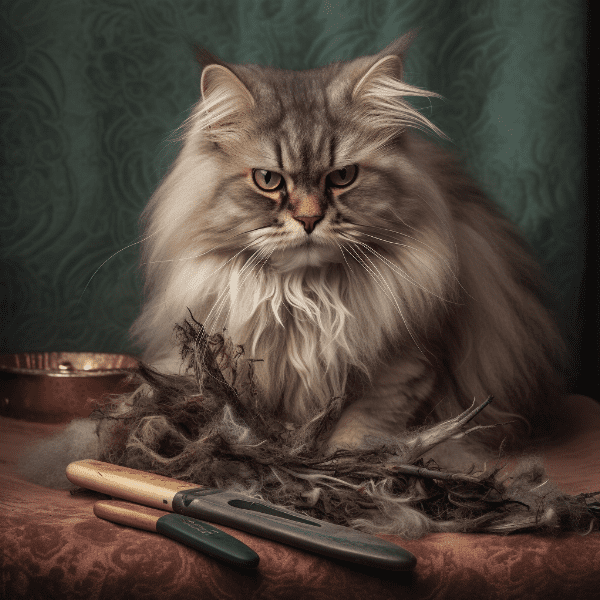
How to Properly Care for a Shaved Long Hair Cat
Caring for a Shaved long hair cat is different from caring for a cat with long hair. Here are some tips for properly caring for a cat that has been shaved.
Protecting Against Sunburn
Since a shaved cat has less fur to protect its skin, it may be more susceptible to sunburn. If your cat spends a lot of time outside, it’s important to protect its skin from the sun’s harmful rays. This can be done by providing shaded areas for the cat to rest in or by using pet-safe sunscreen on exposed skin.
Keeping Warm in Cold Weather
While shaving a cat can help keep it cool in hot weather, it may also make the cat more susceptible to cold temperatures. If you live in a cold climate or your cat spends time outside during the winter, make sure to provide warm, cozy areas for the cat to rest in.
Brushing and Grooming
Even though a shaved cat has less fur, it’s still important to regularly groom and brush it to prevent matting and tangles. Use a soft brush or comb to gently remove any loose hair and debris from the cat’s coat. This can also help stimulate blood flow and promote a healthy coat.
Bathing
Shaved cats may need to be bathed more frequently than cats with long hair. This is because their skin may be more exposed to dirt and other irritants. Use a gentle, pet-safe shampoo and warm water to bathe the cat, being careful not to get water in their eyes or ears.
Conclusion
Caring for a shaved long hair cat may require some extra attention and care, but it’s important to keep the cat comfortable and healthy. By protecting against sunburn, keeping the cat warm in cold weather, regular brushing and grooming, and providing regular baths, owners can help keep their feline friends happy and healthy.
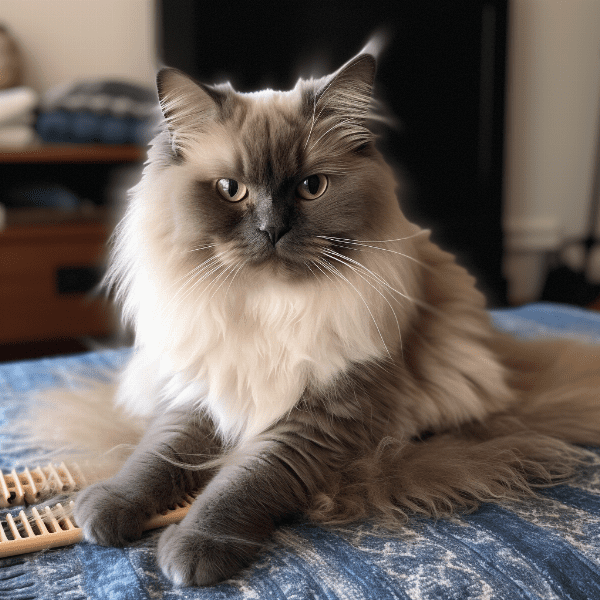
Common Misconceptions About Shaved Long Hair Cats
There are many misconceptions surrounding shaved long hair cats. Here are some common ones, along with the truth behind them.
Myth: Shaving a Long Hair Cat is Cruel
Some people believe that shaving a long hair cat is cruel or inhumane. However, this is not necessarily true. Shaving can actually help improve the health and well-being of some cats, especially those with long, tangled fur or skin issues. As long as the shaving process is done safely and the cat is kept comfortable, there is nothing cruel about it.
Myth: Shaving a Cat Will Change Its Personality
Some people believe that shaving a cat can change its personality or behavior. However, there is no evidence to support this claim. While a cat may be uncomfortable or anxious during the shaving process, it should return to its normal behavior once the process is complete.
Myth: Shaved Cats Need to Wear Clothes to Stay Warm
While it’s true that shaved cats may be more susceptible to cold temperatures, they do not necessarily need to wear clothes to stay warm. As long as the cat has access to warm, cozy areas to rest in, it should be fine. However, if the cat seems cold or uncomfortable, wearing a sweater or other protective clothing can help.
Myth: Shaved Cats Will Be Itchy or Uncomfortable
Some people believe that shaving a cat will make it itchy or uncomfortable. While it’s possible for a cat to experience some discomfort during the shaving process, it should not be uncomfortable or itchy once the process is complete. In fact, many cats feel more comfortable with shorter fur, especially if their long hair was causing them discomfort or irritation.
Conclusion
There are many misconceptions surrounding shaved long hair cats, but most of them are not based in fact. As long as the shaving process is done safely and the cat is kept comfortable, there is no reason to believe that shaving a long hair cat is cruel or inhumane. Shaving can actually help improve the health and well-being of some cats, and it’s important to dispel any myths or misconceptions surrounding this practice.
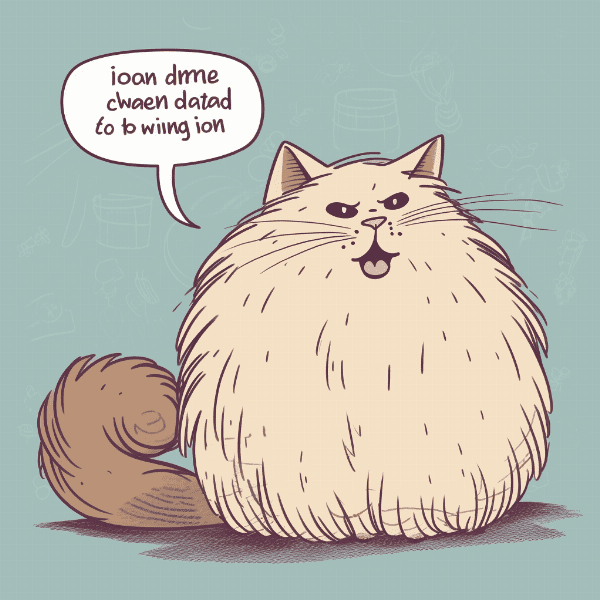
Breeds of Cats That Have Long Hair That Can Be Shaved
While any cat with long hair can be shaved, some breeds are more commonly associated with the practice. Here are some breeds of cats that have long hair that can be shaved.
Persian Cats
Persian cats are known for their long, luxurious coats, but this can also make them susceptible to matting and tangles. Shaving a Persian cat can help keep their fur tangle-free and reduce shedding.
Himalayan Cats
Himalayan cats are a breed that is known for their long, fluffy coats. However, this can also make them more prone to matting and tangling. Shaving can help prevent these issues and make it easier to groom the cat.
Scottish Fold Cats
Scottish Fold cats are a breed that is known for their thick, fluffy coats. While their fur is adorable, it can also be difficult to manage. Shaving can help keep their fur clean and healthy and reduce shedding.
Conclusion
While any cat with long hair can be shaved, some breeds are more commonly associated with the practice. Persian cats, Maine Coon cats, Himalayan cats, and Scottish Fold cats are all breeds that have long hair that can be shaved. Shaving can help keep their fur tangle-free, reduce shedding, and make grooming easier. However, it’s important to always prioritize the comfort and safety of the cat during the shaving process.
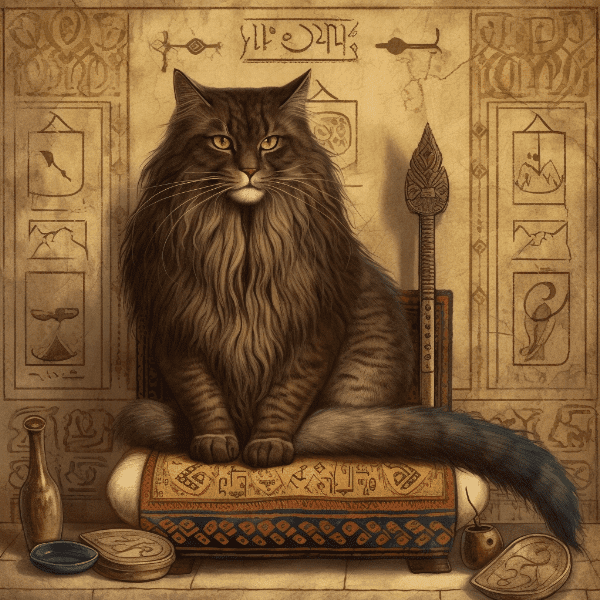
The History of Shaving Long Hair Cats
The practice of shaving long hair cats has been around for centuries, but its origins are somewhat murky. Here is a brief history of the practice.
Ancient Egypt
One of the earliest known references to shaving cats comes from ancient Egypt. Cats were highly regarded in Egyptian culture, and many households kept them as pets. Some cat owners would shave their cats to keep them cool in the hot desert climate.
Medieval Europe
During the Middle Ages, cats were kept as pets to help control rodents in households and on ships. Some cat owners would shave their cats to prevent them from carrying fleas and other pests.
20th Century
In the 20th century, cat grooming became more common as a way to keep cats healthy and comfortable. Shaving became more popular as a way to prevent matting and tangles in long hair cats.
Today
Today, shaving long hair cats is a common practice that is done for a variety of reasons, including reducing shedding, managing skin issues, and keeping cats cool in hot weather.
Conclusion
The history of shaving long hair cats is a long and storied one, with references dating back to ancient Egypt. Today, the practice is more popular than ever, and it’s important for cat owners to understand the benefits and risks associated with it. While not all cats may enjoy being shaved, for some, it can be a beneficial option for improving their health and well-being.
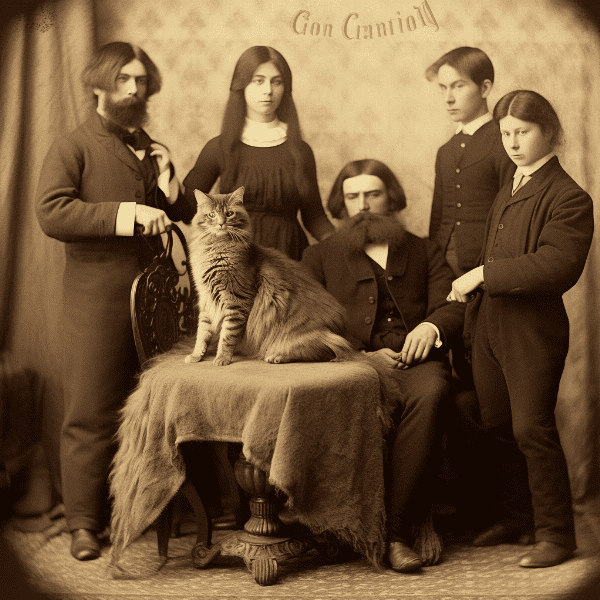
Potential Health Risks Associated with Shaving a Long Hair Cat
While shaving a long hair cat can have many benefits, there are also some potential health risks associated with the practice. Here are some of the most common health risks to be aware of.
Sunburn
As mentioned earlier, a shaved cat may be more susceptible to sunburn, especially if it spends a lot of time outside. This can lead to discomfort and skin damage. To prevent sunburn, provide shaded areas for the cat to rest in or use pet-safe sunscreen on exposed skin.
Hypothermia
Shaving a cat can make it more susceptible to cold temperatures, especially if it spends a lot of time outside. This can lead to hypothermia, which is a potentially life-threatening condition. To prevent hypothermia, make sure the cat has access to warm, cozy areas to rest in, especially during cold weather.
Skin Irritation
Shaving a cat can sometimes lead to skin irritation or rashes. This may be caused by a dull razor or improper grooming techniques. To prevent skin irritation, always use a sharp razor and be gentle when grooming the cat.
Stress
Some cats may become stressed or anxious during the shaving process, especially if they are not used to being groomed. This stress can lead to a variety of health issues, including digestive problems and weakened immune systems. To reduce stress, try to make the shaving process as calm and gentle as possible, and reward the cat with treats or positive reinforcement.
Conclusion
While shaving a long hair cat can have many benefits, there are also some potential health risks to be aware of. Sunburn, hypothermia, skin irritation, and stress are all possible complications associated with shaving. To keep your cat healthy and comfortable, it’s important to take the necessary precautions and prioritize the cat’s safety and well-being during the shaving process.
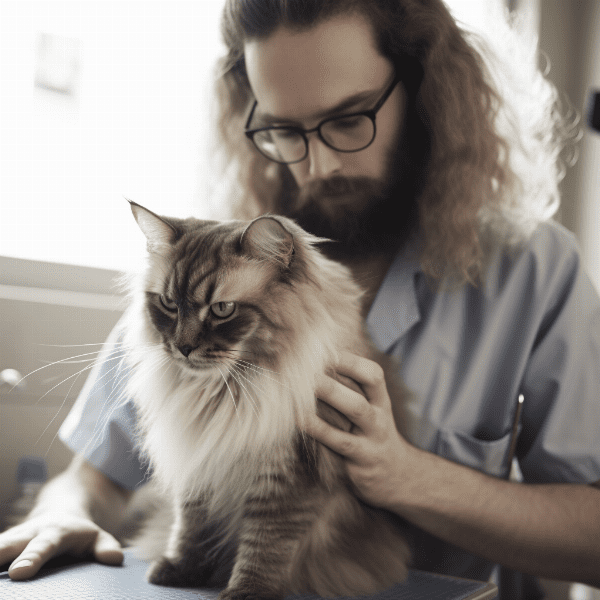
Tips for Preparing Your Cat for a Shave
Preparing your cat for a shave can help reduce stress and ensure a successful grooming experience. Here are some tips for preparing your cat for a shave.
Start Early
If your cat is not used to being groomed, start preparing them for a shave well in advance. This can involve gradually introducing them to grooming tools like brushes and combs, and getting them used to being touched and handled.
Trim Long Hair
Before the actual shaving process begins, trim any excessively long hair with scissors. This can make the shaving process easier and reduce the risk of accidentally nicking the cat’s skin.
Calm and Comfortable Environment
Make sure the environment is calm and comfortable for the cat. Choose a quiet room where the cat feels safe and secure. You may want to use a calming pheromone spray or diffuser to help reduce stress.
Consider Professional Grooming
If you are not comfortable grooming your cat yourself, consider taking them to a professional groomer. Professional groomers have the experience and tools necessary to safely and effectively shave your cat.
Reward with Treats and Praise
During and after the shaving process, reward your cat with treats and praise. This can help reduce stress and make the experience more positive for the cat.
Conclusion
Preparing your cat for a shave can help reduce stress and ensure a successful grooming experience. Starting early, trimming long hair, providing a calm and comfortable environment, considering professional grooming, and rewarding with treats and praise are all important steps in preparing your cat for a shave. With proper preparation and care, shaving a long hair cat can be a safe and effective way to improve their health and well-being.
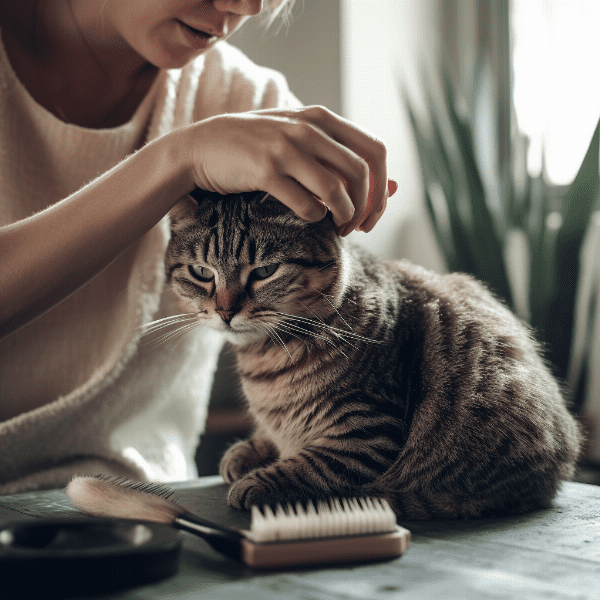
Conclusion: Is Shaving a Long Hair Cat Right for You and Your Feline Friend?
Shaving a long hair cat can have many benefits, but it’s important to weigh the risks and consider whether it’s the right choice for you and your feline friend. Here are some final thoughts to consider.
Benefits of Shaving
Shaving can help reduce shedding, prevent matting and tangles, manage skin issues, and keep cats cool in hot weather. It can also make grooming easier and improve the overall health and well-being of the cat.
Risks of Shaving
Shaving can also have some potential risks, including sunburn, hypothermia, skin irritation, and stress. It’s important to take the necessary precautions to prevent these risks and prioritize the cat’s safety and well-being during the shaving process.
Consider Your Cat’s Personality and Health
Before deciding to shave your cat, consider their personality and health. Some cats may not enjoy being groomed or may be too stressed by the process. Additionally, cats with certain health conditions may not be good candidates for shaving.
Consult with a Vet or Groomer
If you’re unsure whether shaving is right for your cat, consider consulting with a veterinarian or professional groomer. They can provide valuable advice and help you make an informed decision.
Conclusion
Shaving a long hair cat can be a beneficial option for improving their health and well-being, but it’s important to carefully consider the risks and benefits and consult with a professional if necessary. With proper preparation and care, shaving can be a safe and effective way to keep your feline friend healthy and comfortable.
